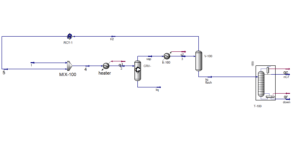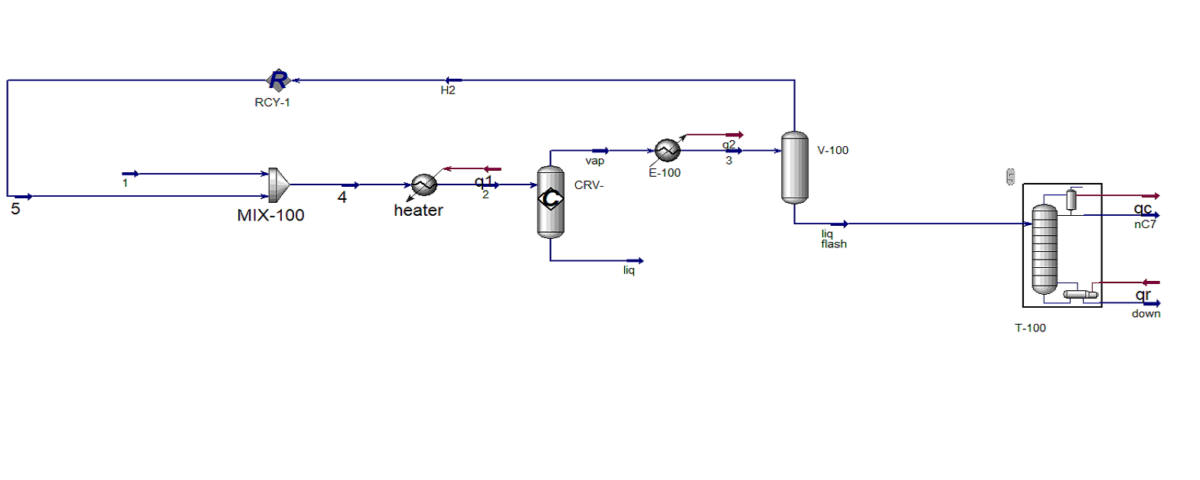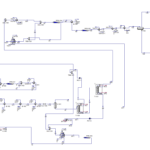Introduction
Toluene, a clear, colorless liquid, is commonly obtained from coal tar. Also known as methylbenzene or Phenylethane, it is a highly flammable substance. Toluene has a distinctive sweet, pungent odor similar to paint thinners. It is soluble in organic solvents but insoluble in water, making it an excellent solvent in industries such as adhesives, paints, and coatings.
Process Description
The production process begins with naphtha or aromatic-rich fractions from refineries as feedstock. The first major step is catalytic reforming, where the feedstock undergoes catalytic reactions in the presence of a catalyst like platinum on alumina. This converts paraffins and Naphthenes into aromatics, including benzene, toluene, and xylenes (BTX).
The resulting BTX-rich stream is then sent to a separation unit. Here, the mixture is distilled to separate benzene, toluene, and xylenes into individual streams. Toluene is typically separated from benzene and xylenes based on boiling point and specific process conditions.
The toluene-rich stream from the separation unit undergoes further purification to obtain high-purity toluene. This involves multiple distillation columns or other separation techniques. To achieve high purity (often above 99.5%), toluene undergoes additional treatments, such as solvent extraction or molecular sieves, to remove impurities like sulfur compounds and other aromatic contaminants.
Once purified, toluene is stored in tanks under controlled conditions to prevent contamination and ensure safety. It can then be distributed to customers or downstream industries via tank trucks, railcars, or pipelines for various applications. Throughout the process, rigorous quality control measures monitor toluene composition and purity. Safety protocols are strictly adhered to mitigate risks associated with handling aromatic hydrocarbons.
In general, the simulation of toluene production involves the optimization of these steps for efficiency, yield and quality, often using advanced process simulation software to model and predict the process behavior under different conditions. This ensures that production meets strict regulatory standards and market demands effectively.

Optimization
Employing catalysts with high activity, suitable selectivity, and superior thermal stability can significantly boost yield and reduce production costs. Through a series of experiments and simulations, optimal operational conditions (temperature, pressure, molar ratio, and residence time) can be determined for each reactor and catalyst. Reactor design, tailored to reaction kinetics, fluid properties, and heat transfer, can enhance process performance and minimize pressure drop.
Selecting appropriate separation techniques (such as distillation, extraction, adsorption, and crystallization) and optimizing their operating conditions can facilitate product purification with minimal energy and chemical consumption. The integration of advanced technologies like Nanocatalysts, microchannel reactors, and molecular simulations can further improve process performance and pave the way for novel toluene production processes. By harnessing diverse optimization techniques and cutting-edge technologies, it is possible to achieve higher-quality toluene production at lower costs, while minimizing environmental impact.

Conclusion
Toluene, as an important aromatic compound, plays a vital role in various industries. Due to its unique properties, including high solubility, thermal stability and good reactivity, this chemical is used as a starting material in the production of a wide variety of products. However, due to the dangers of toxicity and flammability, it should be used with caution and all safety precautions should be observed. Also, developing methods of producing and using toluene with the least damage to the environment is one of the important challenges in this field.
Optimizing and Simulating The Toluene Production Process With Aspen Hysys
In this project, the optimization and simulation of the toluene production process with Aspen Hysys is simulated with the Aspen Hysys version 14 software.


